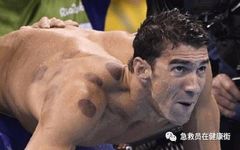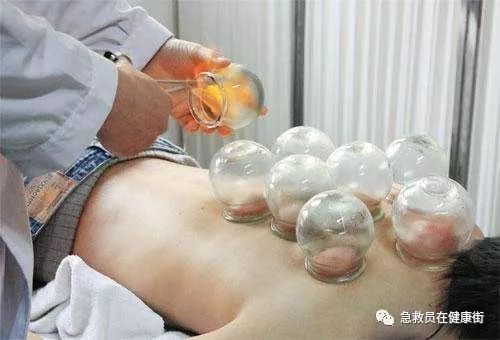
-
Cupping Therapy
Locking
Synonyms: cupping therapy generally refers to fire cupping
This entry is provided by the National Health Commission’s authoritative medical science communication network platform / Baike Mingyi.
Cupping therapy uses cups as tools, employing methods such as fire and suction to create negative pressure, which adheres to the skin surface, causing local bruising. This therapy aims to promote circulation, invigorate blood flow, reduce swelling and pain, and dispel wind and cold. Cupping therapy has a long history in China, with references dating back to the “Fifty-Two Diseases” written during the Western Han Dynasty, which mentions a technique similar to modern fire cupping. Cupping therapy was also popular in ancient Greece and Rome.

-
Chinese Name
-
Cupping
-
Foreign Name
-
Cupping
-
Indications
-
Cough, cervical and shoulder syndrome, etc. for preventive health care
-
Consultation Department
-
Acupuncture Department

Science Popularization in China
Committed to authoritative scientific communication
This entry is certified by

Zhang Dongshu丨Associate Professor
School of Traditional Chinese Medicine, Southern Medical University, Acupuncture Department Written by
National Health Commission’s authoritative medical science communication network platform
Cupping is not unique to China
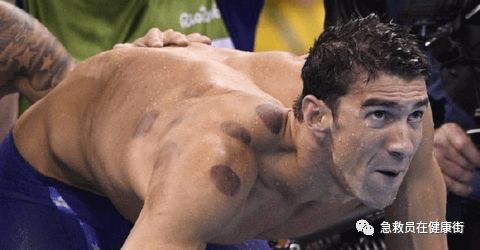 During the Rio Olympics, the cupping marks on American swimmer Michael Phelps drew the attention of Chinese netizens. This therapy, widely used in Chinese folk medicine, has gained recognition from foreign athletes, which is indeed surprising. However, in fact, cupping therapy is not unique to China.
During the Rio Olympics, the cupping marks on American swimmer Michael Phelps drew the attention of Chinese netizens. This therapy, widely used in Chinese folk medicine, has gained recognition from foreign athletes, which is indeed surprising. However, in fact, cupping therapy is not unique to China.
-
More on cupping in Western ancient medicine
-
In Western ancient medicine, cupping was referred to as “cup suction”. Babylonian medical diaries depict the health deity Ninuta or Adar holding cupping instruments. Horn cups and glass cups were the main tools used, and in the 19th century, a new type of device combining syringes and suction cups emerged. Japan and India also have records of suction therapies.
-
More on the history of cupping in TCM
-
Records of cupping in China date back to the Western Han Dynasty, where it was merely considered a common surgical method. It wasn’t until the Tang Dynasty’s “Secret Essentials of External Medicine” that cupping was formally documented as a therapy. Moreover, traditional TCM texts did not incorporate cupping into the conventional medical system.
Content organized by: du Xiaoli
Table of Contents
-
1 Common Tools
-
2 Clinical Applications
-
3 Preventive Health Care
Basic Information
-
Chinese Name
-
Cupping
-
Foreign Name
-
Cupping
-
Indications
-
Cough, cervical and shoulder syndrome, etc. for preventive health care
-
Consultation Department
-
Acupuncture Department
Common Tools
Currently, there are many types of cupping devices, including bamboo cups, glass cups, and suction cups.
1. Bamboo Cups
(1) Material and Production Bamboo cups are made from solid, undamaged bamboo with a diameter of 3-5 cm, formed into tubes 6-8 cm or 8-10 cm long, with one end left as a base and the other as the cup opening. The green skin and inner membrane are scraped off, forming a cylindrical shape resembling a waist drum, which is then polished with sandpaper to make the opening smooth and even.
(2) Advantages Easy to source, simple to make, lightweight and durable, portable, economical, and not easily breakable; bamboo cups have strong suction power, making them suitable for areas with more muscle, such as the shoulders and back, as well as thinner skin areas like the wrists, ankles, and neck. Compared to small-diameter glass cups, bamboo cups have a significant advantage in suction power. Additionally, bamboo cups can be placed in boiling medicinal liquid for infusion before applying to acupoints or the skin, improving local blood circulation through negative pressure and enhancing the therapeutic effect through the permeation of the medicinal liquid.
(3) Disadvantages Prone to drying and leaking; opaque, making it difficult to observe skin reactions inside the cup, thus not suitable for bloodletting cupping.
2. Glass Cups
(1) Material and Production Glass cups are made from heat-resistant glass, shaped like a sphere with an open bottom and a wide belly, categorized by the diameter of the opening and the size of the cavity.
(2) Advantages The advantages include smooth openings, transparent material, making it easy to observe the degree of skin congestion and bruising at the cupping site, thus controlling the duration of cupping; they are currently the most widely used cupping devices in clinical practice, especially suitable for moving cupping, flash cupping, bloodletting cupping, and needle retention cupping.
(3) Disadvantages Conduct heat quickly, prone to burns, and easily breakable.
3. Suction Cups
(1) Material and Production Suction cups are made from organic glass or transparent engineering resin, using a piston at the top of the cup to control air extraction, creating negative pressure within the cup.
(2) Advantages Suction cups do not require fire or electricity, eliminating safety hazards and preventing burns; they are easy to operate and can be widely used for personal and family self-care, making them a popular new type of cupping device.
(3) Disadvantages Lack the warming stimulation effect of fire cupping.
Clinical Applications
1. Methods of Cupping
Key points for flash fire method: Use tweezers to hold an alcohol cotton ball, ignite it, and circle it inside the cup before removing it; quickly place the cup over the area to be treated to create suction.
2. Applications of Cupping
(1) Retained Cupping After suctioning the cup onto the skin, leave it in place for 5-10 minutes; commonly used for wind-cold-damp bi syndrome, neck, shoulder, waist, and leg pain.
(2) Moving Cupping Apply a liniment to the cup opening, after suctioning, hold the bottom of the cup and move it back and forth several times until the skin turns red; used for larger areas with more muscle, such as the back; commonly used for colds and coughs.
(3) Flash Cupping After suctioning the cup, immediately remove it and repeat several times until the skin turns red; commonly used for facial paralysis.
(4) Bloodletting Cupping First, use a plum blossom needle or three-edged needle to prick the area to induce bleeding; then apply cupping to draw out 3-5 ml of blood; commonly used for acne and other skin disorders.
3. Precautions for Cupping
(1) Contraindications for Operation Avoid burning the cup opening during cupping, as this can cause burns; do not leave the cup on for more than 20 minutes, as this can damage the skin.
(2) Contraindications for Location Avoid cupping on areas with skin allergies, ulcers, edema, and over the heart, major blood vessels, and lower abdomen.
Preventive Health Care
1. Cupping for Cough
Main acupoints include Chuan (喘穴) and Fei Yu (肺俞穴); for wind-cold cough, add Feng Men (风门穴); for wind-heat cough, add Da Zhui (大椎穴). Use the flash fire method for cupping, leaving the cup for 8-10 minutes (for younger children, the negative pressure should be lower to avoid skin damage); children can also use the flash cupping method, once daily, with 3-5 sessions as one course of treatment.
2. Cupping for Cervical and Shoulder Syndrome
Patients lie face down, and the doctor applies an appropriate amount of liniment to the skin over the sternocleidomastoid and upper trapezius muscles where there is soreness, numbness, and pain, then applies the fire cup to the skin and moves it back and forth over the affected area until the skin shows purple-red or purple-black spots. After moving cupping, use a three-edged needle to prick the spots, then use a medium-sized fire cup with the flash fire method for cupping, leaving it for about 10 minutes, with each spot drawing out about 2-3 ml of blood, every other day, for a total of 5 sessions as one course of treatment.
3. Cupping for Knee Arthritis
Medicinal cupping can be used: Prepare 15 grams each of Qiang Huo (羌活), Du Huo (独活), Fang Feng (防风), Mu Guo (木瓜), Sang Zhi (桑枝), Chuan Duan (川断), Niu Xi (牛膝), Du Zhong (杜仲), Ai Ye (艾叶), Ji Xue Teng (鸡血藤), Chuan Xiong (川芎), and Dang Gui (当归), place them in a cloth bag, boil in water for 5 minutes, then place a small bamboo cup in the medicinal liquid for 10 minutes. When using, use tweezers to hold the bamboo cup and tap it on the inner and outer knee points and He Ding (鹤顶穴), for 15 minutes each time, every other day, for a total of 10 sessions as one course of treatment.
-
Academic Papers
Content from

-
Meng Fantao. Acupuncture combined with cupping therapy for hypertrophic knee arthritis. 《 Journal of Clinical Acupuncture 》 , 2000
-
Zhu Ying, Wang Yongmei, Du Yan. Injection at the back Shu points combined with cupping therapy for allergic rhinitis in 36 cases. 《 Hebei Traditional Chinese Medicine 》 , 2009
-
Li Zhiping. Cupping combined with acupoint application for chronic obstructive pulmonary disease in 360 cases. 《 Chinese Medicine Research 》 , 2008
-
Qin Xiuhai. Cupping combined with electroacupuncture for psoriasis in 104 cases. 《 Shanxi Traditional Chinese Medicine 》 , 2000
-
Zhu Nanfang, Guan Ketao, Zhao Chunling, et al. The effect of cupping and acupoint injection on T cell subsets in children with recurrent respiratory infections. 《 Chinese Journal of Traditional Chinese Medicine and Pharmacy 》 , 2003
-
View all
Entry Tags:
-
Scientific Encyclopedia Disease Symptom Classification , Life Terminology , Life , Medical Terminology
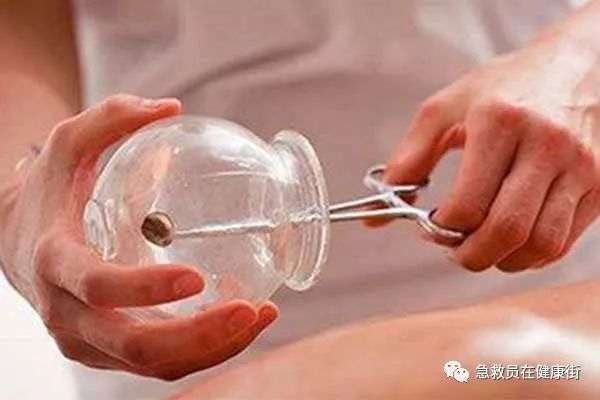
-
Cupping Therapy
Edit
Cupping therapy is a traditional Chinese medical treatment that many people, especially the elderly, are familiar with due to its simple and convenient operation. It has also been regarded as an important method for home first aid. This therapy uses heat to expel air from the cup, creating negative pressure that adheres to the skin, causing bruising. Some believe this therapy can dispel cold and dampness, unblock meridians, eliminate stagnation, invigorate blood flow, reduce swelling and pain, and detoxify, thus balancing the body’s yin and yang, relieving fatigue, and enhancing physical strength, ultimately achieving the goal of strengthening the body and eliminating pathogens to cure diseases.
-
Chinese Name
-
Cupping Therapy
-
Foreign Name
-
Cupping
-
(2)
-
Ceramic Fire Cups
-
(1)
-
Bamboo Fire Cups
-
(3)
-
Glass Fire Cups
Table of Contents
-
1 Definition
-
2 Characteristics
-
3 Types
-
4 Mechanism of Action
-
5 Medical Efficacy
-
6 Precautions
-
7 Methods of Operation
-
8 Diagnosis
-
9 Contraindications
Definition
Edit
Cupping therapy (commonly known as fire cupping) uses cups as tools, employing burning and squeezing methods to expel air from the cup, creating negative pressure that adheres to specific areas of the skin (affected areas, acupoints), producing extensive stimulation and causing local congestion or bruising, thus achieving the purpose of disease prevention and treatment, and strengthening the body. Like acupuncture, cupping is also a physical therapy and is one of the most effective physical therapies. It is an ancient folk medical practice, suitable for children as well. It is also known as “cupping”. There are fire cups, air cups, etc.
Cupping therapy, also known as “fire cupping”, was historically referred to as “horn method”. This therapy uses cups to create negative pressure by expelling air through heat, causing bruising. Ancient physicians used it to draw blood and pus from sores and abscesses, and later it was applied to internal diseases such as tuberculosis and rheumatism. After the founding of the People’s Republic of China, continuous improvements in methods have led to new developments in cupping therapy, further expanding its treatment scope, making it an important method in acupuncture treatment.

Swimmer Phelps recovers through cupping therapy(3 images)
Characteristics
Edit
“Cupping” is the colloquial term for cupping therapy, also known as “cupping” or “suction tube”. Many diseases can be treated with cupping therapy. For instance, middle-aged individuals often experience joint pain, which, according to TCM, is often due to wind and dampness entering the bones. During cupping, the cup is placed over the affected area, gradually drawing out the dampness from the lesion while promoting local blood circulation, achieving pain relief and restoring function, thus treating rheumatic “pain” and discomfort in the joints.
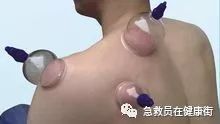 Cupping Therapy–Dingyao
Cupping Therapy–Dingyao
Due to its ability to invigorate blood flow, dispel wind and cold, and reduce swelling and pain, cupping is believed to have certain therapeutic effects on muscle strain in the lower back and lumbar disc herniation.
Types
Edit
(1) Bamboo Fire Cups: Made from mature bamboo, one end is open, and the other end is left as a base, with diameters of 3, 4, and 5 cm, and lengths of about 8-10 cm. The larger diameter is used for larger areas like the back and buttocks; the smaller diameter is used for joints in the limbs. Bamboo cups that are not used for a long time can become too dry and allow air to enter. Before use, they can be soaked in warm water for a few minutes to ensure a tight seal and prevent air leakage. Bamboo cups are commonly used in southern China.
(2) Ceramic Fire Cups: Made from clay, shaped with a round opening and a large belly, glazed with black or yellow, and fired in a kiln. They come in various sizes, and ceramic cups are smooth inside and out, have strong suction power, are economical, and are preferred in rural northern areas.
(3) Glass Fire Cups: A traditional TCM tool made from high-quality, pure glass produced in Xuzhou, known for its long history. They are environmentally friendly products made using high-temperature glass chain furnaces. The quality is transparent, with thick walls and smooth edges. They are made from heat-resistant glass, with a small opening and a large cavity, slightly flared at the top. There are five sizes available. The advantage of glass cups is that their transparent walls allow for real-time observation of skin changes at the cupping site, making them the most commonly used in clinical practice, especially suitable for bloodletting cupping.
(4) Suction Cups: Made from penicillin or streptomycin bottles or similar small bottles, with the bottom cut off and smoothed. The rubber stopper at the top must remain intact for air extraction. Currently, they are made from transparent plastic, which is not easily breakable. They have a piston at the top for easy air extraction.
(5) Horn Cups: Made from cow or sheep horns, the tip is cut off, leaving 1-2 cm of solid horn as the base. The opening is smoothed and is about 10 cm long, with diameters of 6 cm, 5 cm, and 4 cm. They are durable but are rarely used due to the difficulty in collecting animal horns.
(6) Copper Cups: Copper cupping is a traditional method in Tibetan and Mongolian medicine.
Mechanism of Action
Edit
1. Negative Pressure Effect: Researchers have found that during cupping, a large number of bubbles appear on the skin surface, and the negative pressure enhances gas exchange in local tissues. It has been observed that negative pressure changes the permeability of local capillaries and causes capillary rupture, allowing a small amount of blood to enter the interstitial space, resulting in bruising. Red blood cells are damaged, releasing hemoglobin, leading to a self-hemolysis phenomenon. This self-regulation produces effects such as invigorating blood flow, relaxing muscles and meridians, reducing swelling and pain, and dispelling wind and dampness, providing beneficial stimulation to restore normal function.
2. Warming Effect: Cupping provides warming stimulation to the local skin, facilitating the exchange of heat and cold. This is most evident with large fire cups, water cups, and medicinal cups. The warming stimulation causes blood vessels to dilate, promoting local blood circulation, improving congestion, enhancing metabolism, accelerating the elimination of waste and toxins, altering the nutritional status of local tissues, increasing the permeability of blood vessel walls, enhancing the phagocytic activity of white blood cells and reticular cells, and improving local tolerance and the body’s resistance, achieving warming the meridians, dispelling cold, and detoxifying, thus promoting disease recovery.
3. Regulatory Effect: The regulatory effect of cupping is based on the negative pressure or warming effect, primarily regulating the nervous system. The self-hemolysis and other beneficial stimuli act on the peripheral receptors of the nervous system, transmitting signals to the brain cortex; combined with the warming stimulation of cupping on the local skin, the reflex pathways through skin and vascular receptors reach the central nervous system, resulting in reflexive excitation, balancing the excitation and inhibition processes in the brain cortex, enhancing the brain’s regulatory function over various body parts, promoting metabolism in the corresponding tissues of the affected skin, enhancing phagocytosis, and restoring function, thus correcting the imbalance of yin and yang and gradually curing diseases. Additionally, it regulates microcirculation, improving metabolism. The main function of microcirculation is to facilitate the exchange of substances between blood and tissues, which is significant in both physiological and pathological aspects. It also enhances lymphatic circulation and the phagocytic capacity of lymphocytes. Furthermore, due to the self-hemolysis phenomenon after cupping, a substance similar to histamine is produced, circulating throughout the body and stimulating various organs, enhancing their functional vitality, aiding in the recovery of bodily functions.
4. Different Cupping Methods, Different Effects: Based on the commonality of fire cupping, different cupping methods have their unique effects. For example, moving cupping has effects similar to massage therapy and scraping therapy, improving skin respiration and nutrition, benefiting the secretion of sweat and sebaceous glands, enhancing the elasticity and mobility of joints and tendons, promoting peripheral blood circulation, increasing blood flow to muscles, enhancing muscle work capacity and endurance, preventing muscle atrophy, deepening respiration, stimulating the nerves that control abdominal organs, and enhancing the secretion functions of organs such as the stomach and intestines; it can accelerate venous blood return, reduce systemic circulation resistance, lighten the heart’s burden, and adjust the distribution of blood flow and reserves between muscles and internal organs. Slow and gentle techniques have a calming effect on the nervous system, while rapid and heavy techniques have a stimulating effect.
Medical Efficacy
Edit
“Cupping” is the colloquial term for cupping therapy, also known as “cupping” or “suction tube”. It is a method of treating diseases by using heat to expel air from the cup, creating negative pressure that adheres to the skin, causing bruising. This therapy can dispel cold and dampness, unblock meridians, eliminate stagnation, invigorate blood flow, reduce swelling and pain, and detoxify, thus balancing the body’s yin and yang, relieving fatigue, and enhancing physical strength, ultimately achieving the goal of strengthening the body and eliminating pathogens to cure diseases. Therefore, many diseases can be treated with cupping therapy. For instance, middle-aged individuals often experience joint pain, which, according to TCM, is often due to wind and dampness entering the bones. During cupping, the cup is placed over the affected area, gradually drawing out the dampness from the lesion while promoting local blood circulation, achieving pain relief and restoring function, thus treating rheumatic “pain” and discomfort in the joints.
Due to its ability to invigorate blood flow, dispel wind and cold, and reduce swelling and pain, cupping is believed to have certain therapeutic effects on muscle strain in the lower back and lumbar disc herniation. Teacher Diao also mentioned that cupping can be applied to acupoints on the body to treat headaches, dizziness, eye swelling, cough, asthma, abdominal pain, etc., and multiple cups can be used simultaneously.
Precautions
Edit
① When cupping, choose appropriate positions and areas with sufficient muscle. If the position is improper, or if there are protruding bones, or areas with excessive hair, they are not suitable for cupping.
② Choose appropriately sized cups based on the area being treated. The operation must be quick to ensure a tight seal and strong suction.
③ When using fire cups, be careful not to burn or scald the skin. If burns occur or if the cup is left on too long causing blisters, small blisters do not require treatment, just cover with disinfected gauze to prevent rupture. For larger blisters, use a disinfected needle to release the fluid, apply gentian violet, or cover with disinfected gauze to prevent infection.
④ Avoid cupping on areas with skin allergies, ulcers, edema, and major blood vessels. Avoid cupping on the abdomen and lower back of pregnant women, as it may lead to miscarriage. Additionally, individuals with chronic lung diseases may experience ruptured alveoli.
Experts suggest that bathing after cupping can easily lead to catching a cold, so it is advisable not to bathe immediately after cupping. Many who enjoy bathing often say, “Cupping and bathing, both are essential.” Indeed, warm bath water and warm cupping are comfortable, but this sequence must be noted; it is acceptable to bathe after cupping, but not to bathe immediately after cupping.
Methods of Operation
Edit
Experts remind us that since this is a professional treatment method, cupping is not simple. If one performs cupping at home without proper knowledge, it can lead to dangers, and there are many incidents of accidents during cupping. Incorrectly applying acupoints can sometimes have adverse effects.
First, pay attention to the materials used. TCM often uses bamboo tubes; if unavailable, glass bottles or ceramic cups can be used, but the opening must be thick and smooth to avoid injury to the skin. The bottom should preferably be wide and rounded.
Before cupping, the cups should be cleaned and dried, and the patient should be comfortably lying down or sitting, exposing the area to be treated. Then, ignite the cup. Generally, one hand holds the cup while the other holds the ignited probe, and the operation should be quick. After shaking the ignited probe inside the cup, quickly place the cup on the treatment area; the cup opening should be tightly sealed while the fire is still burning, as waiting for the fire to extinguish will make it too loose, which is not conducive to drawing out dampness. The feeling of the cup should be tightly adhered to the skin. Be careful not to heat the edges of the cup to prevent burns.
Generally, cupping for 15-20 minutes is sufficient before removing the cup. When removing, do not forcibly pull the cup; do not yank or twist it. The technique is to tilt the cup to one side with one hand while pressing the skin with the other hand, allowing air to enter the cup through the gap, and the cup will naturally detach from the skin.
Moving cupping can also be performed. Moving cupping refers to holding the cup after it has been applied and gently lifting it, pushing and pulling the cup over the patient’s skin. It can be moved in one direction or back and forth. This way, multiple areas can be treated. When moving cupping, it is advisable to apply some lubricant, such as glycerin, paraffin oil, or scraping oil, to the area to prevent skin injury.
Diagnosis
Edit
Teacher Diao and other experts particularly mentioned some contraindications for cupping, such as not performing it on a full or empty stomach; one should first relieve themselves in the morning; the same area should not be cupped daily, and cupping should not be repeated on the same area until the marks have faded. Certain populations should avoid cupping, including those with heart disease, blood disorders, skin diseases, skin injuries, mental illness, or neurosis, as well as those with tuberculosis and various infectious diseases, fractures, extreme weakness, pregnant women, women during menstruation, and those who are overly full, hungry, thirsty, or intoxicated. Cupping should also be avoided in individuals who are too thin. Caution should be exercised when cupping on the head and heart; not every injury or pain should be treated with cupping, as external injuries or internal muscle tears should not be treated with cupping, as this can have adverse effects.
As a traditional external treatment method in TCM, cupping also requires dialectical thinking. For example, when treating headaches, it is generally combined with acupoint therapy. In this case, it is essential to distinguish the symptoms; for wind-cold headaches, cupping is applied to the forehead and temples; for severe headaches, acupoints such as Taiyang (太阳) and Yin Tang (印堂) can be selected; for hypertension-related headaches, use bilateral Taiyang; if the pain is more severe in the forehead, add bilateral Zan Zhu (攒竹); if the pain is more severe at the top of the head, add Bai Hui (百会); if there is limited neck movement, add bilateral Feng Chi (风池); if symptoms such as dizziness, blurred vision, or tinnitus are prominent, add bilateral Tou Wei (头维) acupoints. This is not something that can be performed by just anyone; it requires guidance from a physician and should be performed according to TCM meridian theory.
Cupping therapy is a method that uses cups as tools, employing heat to adhere to acupoints or specific areas of the skin, causing local congestion or bruising.
1. The patient should be in a comfortable position, allowing the muscles to relax, and the treatment area should be exposed.
2. Choose appropriately sized fire cups based on the condition and treatment area.
3. If the treatment area has excessive hair, apply petroleum jelly.
4. Select the appropriate cupping method, such as flash fire, and quickly place the cup on the selected area.
5. Depending on the condition, one or several cups can be used simultaneously.
6. The duration of cupping should be determined by the size of the cup and the strength of the suction. Large cups with strong suction should be cupped for 3-5 minutes; small cups with weaker suction should be cupped for 10-20 minutes.
7. When removing the cup, the practitioner should hold the cup with one hand and gently press the skin around the cupping area with the other hand to allow air to slowly enter the cup, then remove it. Avoid pulling or twisting the cup forcefully. To prevent skin abrasions, petroleum jelly can be applied to the treatment area after cupping.
Contraindications
Edit
1. Contraindications
1. Skin allergies, emaciated individuals, or those with skin that has lost elasticity.
2. Severe systemic convulsions or agitation.
3. Edema or water retention.
4. Severe blood loss, bleeding disorders, or bleeding tendencies.
5. Women during menstruation.
6. Pregnant women in the lower abdomen and lumbar region.
2. Precautions
1. The skin at the cupping site should be flat, and the muscles should be relatively full; it is best to wash and dry the area first.
2. When using cotton swabs or cotton balls soaked in alcohol or using liquid alcohol, do not use excessive alcohol; be careful not to heat the cup opening while burning to avoid scalding the skin.
3. Bony protrusions, areas rich in blood vessels, and areas over the heart, such as the breast, are generally not suitable for cupping.
4. Cupping can mechanically stimulate the skin, reflexively affecting the brain cortex and unblocking meridians. There are different types of cupping: congestive fire cupping (where the skin turns red after suction), bruising fire cupping (where the skin shows purple spots or bruises after suction), and for colds and headaches, congestive fire cupping is suitable at the temples; for bronchitis and asthma, bruising fire cupping can be applied at the back over the Fei Yu (肺俞) acupoint.
5. Cupping should be performed based on the condition, generally alternating acupoints, and not too many at once. Cupping should not be repeated on the same area until the local bruising has faded.
6. During cupping, the position should not be moved to prevent the cup from falling off.
7. During cupping, maintain warmth to prevent exposure to wind and cold.
8. Prevent burns or scalds. If there are burns, apply gentian violet or similar medications. For blisters, small ones do not require treatment, just disinfect and bandage; larger ones should be drained with a sterile needle after disinfection, keeping the blister membrane intact, then apply cooling oil or cover with petroleum jelly and bandage.
Image Gallery More images
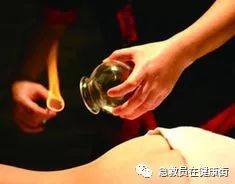
Image Tags(2)
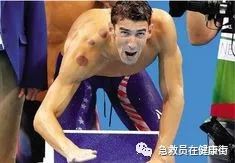
Swimmer Phelps…(3)
Entry Tags:
-
Science , Technology
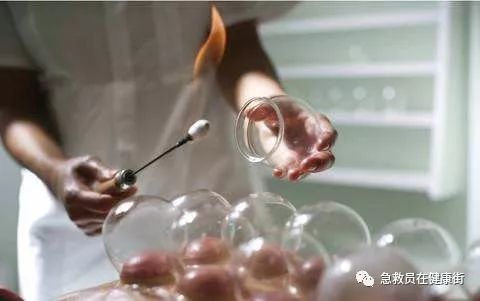
Benefits and Risks of Cupping Therapy
Listen to the audio
-
Original
-
|
-
Views: 1177675
-
|
-
Updated:
-
 1
1 -
 2
2 -
 3
3 -
 4
4 -
 5
5 -
 6
6 -
 7
7
Step-by-step reading
Cupping is a TCM therapy that uses negative pressure to draw out dampness from the body through the skin. It is now popularly associated with weight loss and other aspects, but what are the actual benefits and risks of cupping?
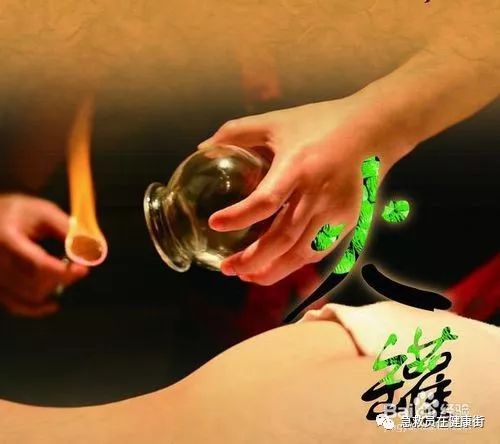
【Benefits】
-
1
1. Cupping can help expel dampness and cold from the body through the skin, thus eliminating pathogenic factors and revitalizing the spirit.
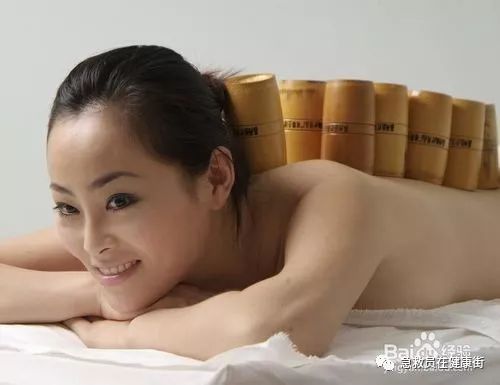
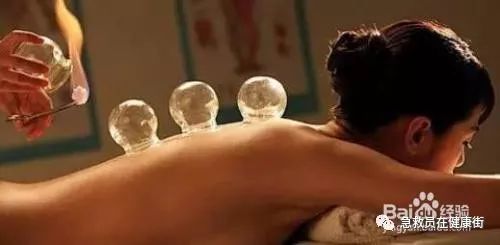
-
2
2. Since the body’s meridians, acupoints, and internal organs are interconnected, the external suction stimulates the acupoints on the skin, which in turn regulates the internal organs through the meridians, promoting smooth circulation of qi and blood, and strengthening the body.
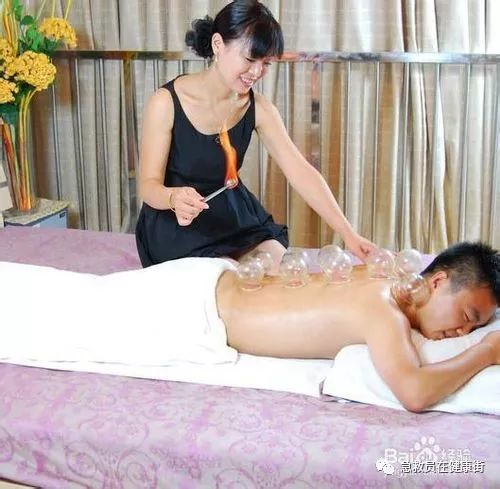
-
3
3. Cupping also has certain effects on local tissue injuries, such as lumbar disc herniation; regular cupping can alleviate pain and symptoms.
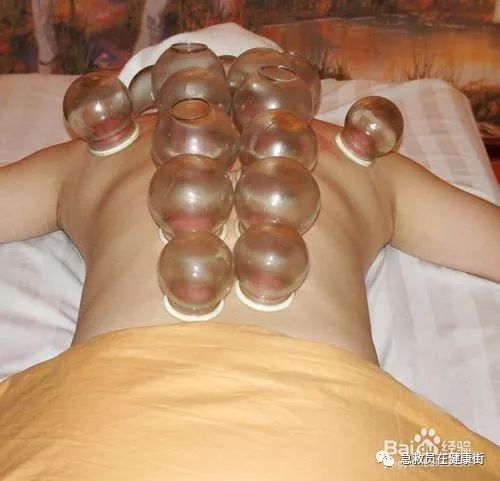
-
4
4. Many beauty and weight loss establishments have begun to research and promote cupping methods for weight loss.
END
【Risks】
-
1. The timing and intervals of cupping must be well managed; some people enjoy the process so much that they cup too frequently, resulting in severe skin damage and infections, as well as significant bruising.

-
2. For patients with inflammation or bleeding disorders, cupping may not only be unhelpful but could also lead to more severe destructive consequences.
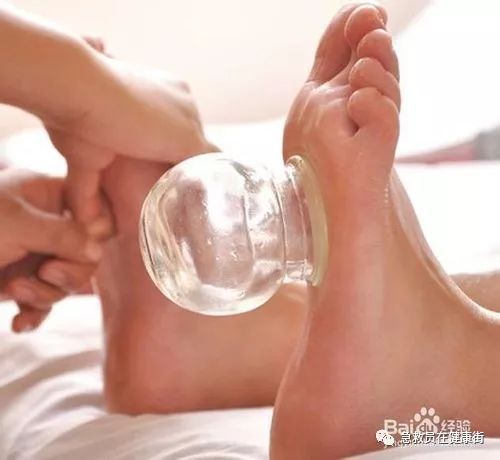
-
3. After cupping, it is advisable to avoid bathing and exposure to cold for a certain period; otherwise, one may develop illnesses even without pre-existing conditions, and in some cases, it may worsen the condition.


